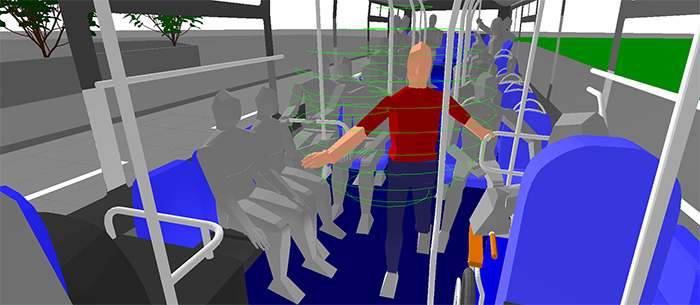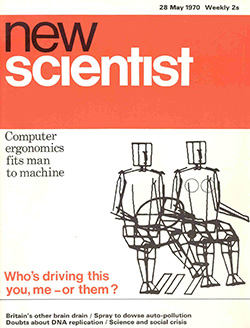OPTU
On the whole, the UK public transport system is generally considered to provide a safe means of mobility. However, each year, around 6,000 people are reported by the UK police to be injured whilst using buses with more than 400 persons killed or seriously injured. Approximately 50% of those injured or killed are aged over 65 years.

Scanned bus model with textures used to add realism.
This research was funded within the Medical Research Council (MRC) Lifelong Health and Wellbeing programme in order to examine the general safety of older public transport users. It explores injury type and causation and proposes design interventions for injury prevention with an overall objective of exploring how public transport use could possibly be made safer for older transport-users.
SAMMIE was used as part of the project to investigate the potential to use 3D computer modelling as part of a process of improving the safety of transport. 3D scanning was employed using a FARO laser scanner to capture the interior of a bus to act as a case study of capturing accident scene data. The data were then post-processed and imported into SAMMIE to provide a virtual recreation of the vehicle. Two main conditions were then evaluated:
1. using a single 5th %ile UK female human model traversing from the back to the front of the vehicle (unencumbered and encumbered with a bag)
2. passengers seated in the transverse seating area at the front of the bus.

Passenger traversing through the bus. At this point there is no convenient hand hold to help with balance.
In both conditions there were a number of areas identified by the analysis that could be effectively explored further using 3D modelling, including the design and placement of hand holds throughout the vehicle and the inclusion of fold-down arm rests in the transverse seating area.
The full project report for the MRC work can be accessed through the Loughborough University Insitutional Repository.






